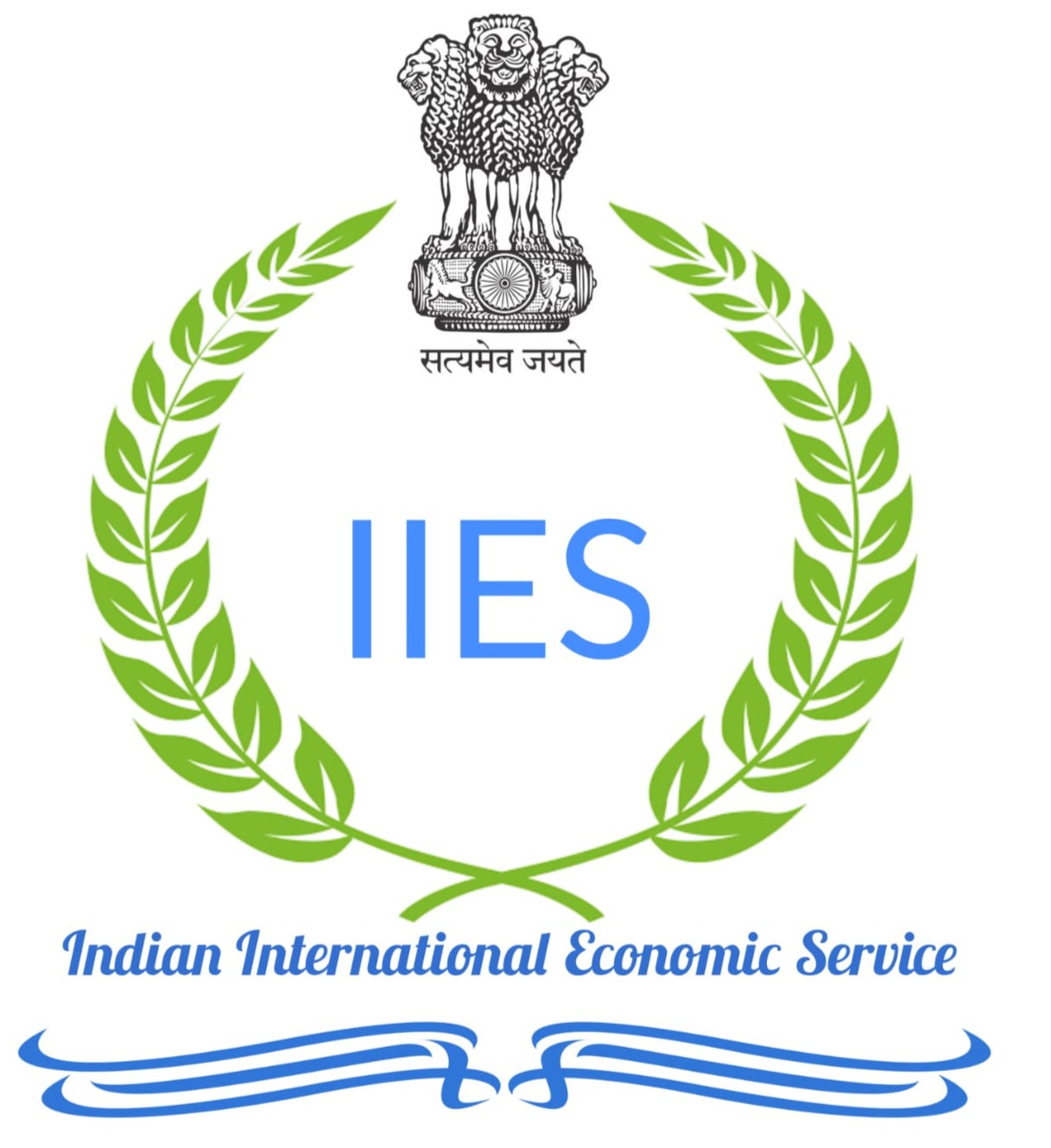IIES
Indian International Economic Service (IIES)
IIES
भारतीय अंतर्राष्ट्रीय आर्थिक सेवा (IIES)
Guidelines for Issuance of No Objection Certificate (NOC) for International Funds अंतर्राष्ट्रीय धन हेतु अनापत्ति प्रमाणपत्र (NOC) जारी करने के दिशा‑निर्देश
In accordance with the instructions issued by the Ministry of Finance, Government of India, the Indian International Economic Service (IIES) shall regulate and supervise the issuance of the No Objection Certificate (NOC) for all international or foreign-origin monetary inflows belonging to Indian and non-Indian origin citizens. The following step-by-step procedure and compliance guidelines must be strictly adhered to by all applicants seeking NOC for international funds.
भारत सरकार के वित्त मंत्रालय द्वारा जारी निर्देशों के अनुसार, भारतीय अंतर्राष्ट्रीय आर्थिक सेवा (IIES) भारतीय एवं गैर‑भारतीय मूल के नागरिकों से संबंधित सभी अंतर्राष्ट्रीय/विदेशी धन प्रवाह के लिए अनापत्ति प्रमाणपत्र (NOC) के निर्गमन को विनियमित एवं पर्यवेक्षित करेगी। नीचे दिए गए चरणबद्ध प्रक्रिया एवं अनुपालन दिशा‑निर्देशों का सभी आवेदकों द्वारा कड़ाई से पालन करना अनिवार्य होगा।
I. Objective of NOC Issuance I. NOC जारी करने का उद्देश्य
The purpose of the NOC is:
NOC का उद्देश्य:
- To verify and approve the legitimacy of all international funds received within India.भारत में प्राप्त सभी अंतर्राष्ट्रीय धन की वैधता का सत्यापन एवं अनुमोदन करना।
- To ensure compliance with the Foreign Exchange Management Act (FEMA), Foreign Contribution Regulation Act (FCRA), and other financial laws.विदेशी मुद्रा प्रबंधन अधिनियम (FEMA), विदेशी अंशदान विनियमन अधिनियम (FCRA) एवं अन्य वित्तीय कानूनों का पालन सुनिश्चित करना।
- To prevent misuse of foreign funds and maintain transparency in cross-border financial transactions.विदेशी धन के दुरुपयोग को रोकना तथा सीमा‑पार वित्तीय लेनदेन में पारदर्शिता बनाए रखना।
- To grant official clearance for withdrawal, transfer, or utilization of international funds.अंतर्राष्ट्रीय धन की निकासी, हस्तांतरण या उपयोग हेतु आधिकारिक स्वीकृति देना।
II. Eligibility Criteria II. पात्रता मानदंड
1. Eligible Persons: 1. पात्र व्यक्ति:
- Indian Citizens.भारतीय नागरिक।
- Non-Resident Indians (NRIs).गैर‑आवासी भारतीय (NRI)।
- Persons of Indian Origin (PIOs).भारतीय मूल के व्यक्ति (PIO)।
- Registered Organizations, Trusts, or Companies receiving funds from abroad.विदेश से धन प्राप्त करने वाले पंजीकृत संगठन, ट्रस्ट या कंपनियाँ।
2. Nature of Funds Covered: 2. आच्छादित धन की प्रकृति:
- Foreign Investment (FDI / Venture Capital).विदेशी निवेश (FDI/वेंचर कैपिटल)।
- Foreign Donations / Grants.विदेशी दान/अनुदान।
- International Aid or Scholarships.अंतर्राष्ट्रीय सहायता या छात्रवृत्तियाँ।
- Inheritance or Personal Remittance from abroad.विदेश से विरासत या व्यक्तिगत प्रेषण।
III. Step-by-Step NOC Process III. चरणबद्ध NOC प्रक्रिया
Obtain Payment Ledger Book पेमेंट लेजर बुक प्राप्त करें
The applicant shall apply to the Indian International Finance Commission (IIFC) for a Payment Ledger Book.
The ledger will include details such as:
लेजर में निम्न विवरण शामिल होंगे:
- Source country of the funds,धन का स्रोत देश,
- Total amount received,प्राप्त कुल राशि,
- Mode of transfer (SWIFT / Wire / PayPal / Bank Transfer / Payment Gateway),
- Purpose of remittance,प्रेषण का उद्देश्य,
- Beneficiary's account details.लाभार्थी के खाते का विवरण।
Without this ledger, no NOC application shall be accepted.
Financial Audit by NFRA NFRA द्वारा वित्तीय लेखा परीक्षा
The applicant must submit the ledger copy to the National Financial Reporting Authority (NFRA) for verification.
NFRA will conduct a financial compliance audit to confirm:
- Legitimacy of the source of funds.
- Proper documentation under FEMA & FCRA.
- No association with any restricted or blacklisted entity.
After verification, NFRA will issue a Certificate of International Revenue Accounting and Financial Compliance.
Apply for Form-28 Certificate फॉर्म‑28 प्रमाणपत्र के लिए आवेदन
Upon receiving NFRA clearance, the applicant must apply to the Indian International Finance Commission (IIFC) for a Form-28 Certificate.
This certificate officially recognizes the fund as legally valid under the Government of India's financial framework.
Payment of NOC Fee NOC शुल्क का भुगतान
After approval of Form-28, the applicant must deposit the NOC Fee prescribed by the IIES.
The fee is calculated annually based on the total amount and category of the international funds.
Payment can be made through:
- The IIES official online portal, or
- Direct payment at the IIFC Treasury Office.
A digital receipt must be retained for submission with the final application.
Issuance of Final NOC (Form-28B) अंतिम NOC (फॉर्म‑28B) का निर्गमन
Once the NOC fee has been successfully paid, the Final No Objection Certificate (Form-28B) shall be issued by IIES.
This certificate serves as official confirmation that:
- All legal and financial clearances have been completed.
- The international fund is free from any governmental restrictions.
- Withdrawal or utilization of the funds may legally commence.
IV. Important Notes and Compliance Requirements IV. महत्वपूर्ण टिप्पणियाँ एवं अनुपालन आवश्यकताएँ
- Any discrepancy found during verification may lead to suspension or rejection of the NOC application.सत्यापन के दौरान किसी भी विसंगति पाए जाने पर NOC आवेदन निलंबित/अस्वीकृत किया जा सकता है।
- Funds originating from jurisdictions classified as high-risk or non-cooperative by the Financial Action Task Force (FATF) shall undergo enhanced scrutiny.वे धन जो FATF द्वारा उच्च जोखिम/असहयोगी घोषित क्षेत्राधिकार से प्राप्त हों, उन पर उन्नत जांच लागू होगी।
- The NOC is valid for 12 months from the date of issuance. Renewal is required if the fund remains unutilized.NOC निर्गमन तिथि से 12 महीनों के लिए मान्य है। धन अप्रयुक्त रहने पर नवीनीकरण आवश्यक है।
- All applicants must maintain transaction records for a minimum of five years for audit and inspection purposes.सभी आवेदकों को लेखा परीक्षा/निरीक्षण हेतु कम से कम पाँच वर्षों तक अभिलेख सुरक्षित रखने होंगे।
- Misrepresentation of facts, falsified documents, or misuse of NOC will attract penal action under Section 13 of the Prevention of Money Laundering Act (PMLA) and relevant provisions of the FEMA Act.तथ्यों की गलत प्रस्तुति, जाली दस्तावेज़ या NOC का दुरुपयोग, धन शोधन निवारण अधिनियम (PMLA) की धारा 13 तथा FEMA के प्रासंगिक प्रावधानों के अंतर्गत दंडनीय होगा।


